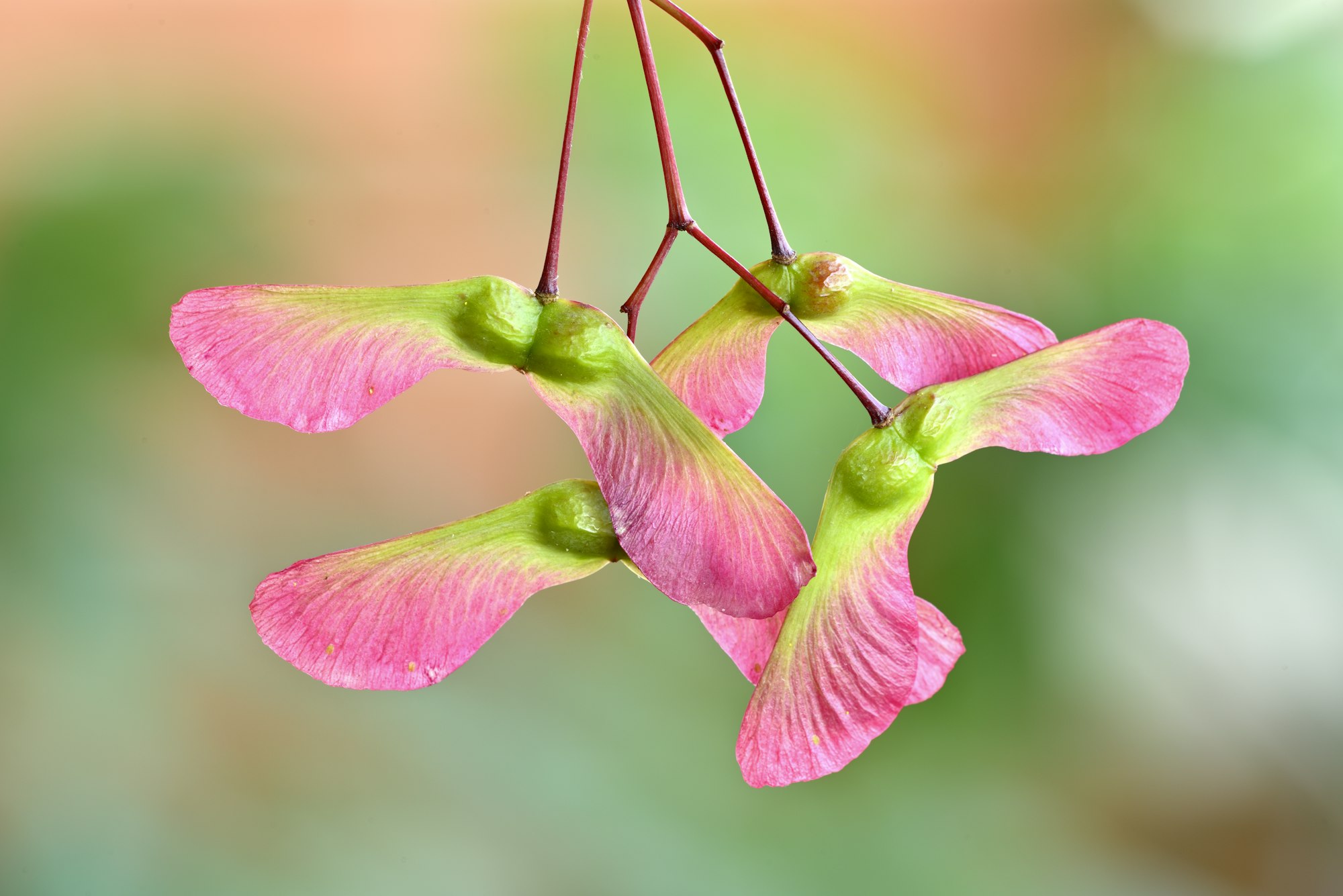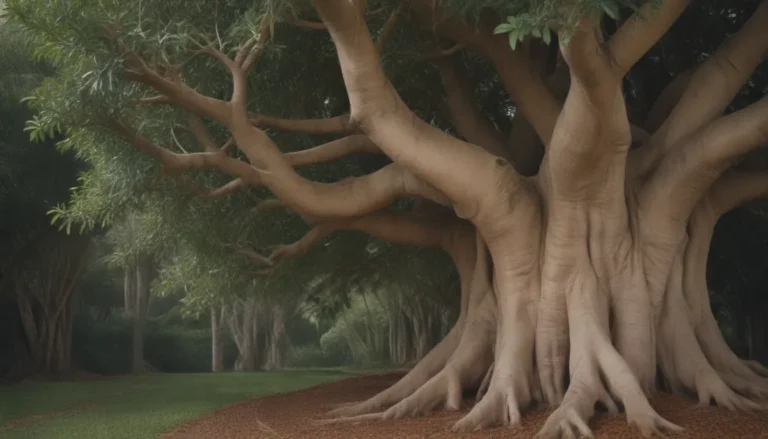Trees with Helicopter Seeds: Nature’s Whirling Wonders

Introduction
Have you ever watched in wonder as tiny “helicopters” twirled down from trees, spinning through the air like nature’s own flying machines? These fascinating seeds, known as samaras or helicopter seeds, are a marvel of natural engineering. Found on several types of trees, these unique seeds have captivated both young and old for generations.
In this blog post, we’ll dive into the enchanting world of trees with helicopter seeds, also called samara fruit. We’ll explore what makes these seeds so special, which trees produce them, and why they’ve evolved this clever dispersal method. Whether you’re a nature enthusiast, a curious gardener, or simply someone who loves learning about the wonders of our natural world, you’re in for a treat!
What Are Helicopter Seeds?
Helicopter seeds, scientifically known as samaras, are a type of fruit produced by certain trees. What makes them unique is their distinctive shape and aerodynamic properties. These seeds typically consist of two main parts:
- The seed itself, which contains the genetic material for a new tree
- A wing-like extension that allows the seed to spin as it falls
This design is no accident – it’s a brilliant adaptation that helps these trees spread their seeds far and wide. As the seeds fall from the tree, they rotate rapidly, creating a helicopter-like motion that slows their descent and allows them to be carried further by the wind.
The Science Behind the Spin
The spinning motion of helicopter seeds is a fascinating example of autorotation, the same principle that allows helicopters to land safely if their engines fail. Here’s how it works:
- As the samara falls, air resistance causes it to start spinning.
- The spinning creates lift, much like the rotor blades of a helicopter.
- This lift slows the seed’s descent, giving it more time to be carried by the wind.
- The extended “flight time” increases the chances of the seed landing far from the parent tree.
This clever dispersal method helps trees colonize new areas and reduces competition between parent trees and their offspring.
Trees That Produce Helicopter Seeds
Several tree species have evolved to produce samara fruit. Some of the most common include:
- Maple trees (Acer species): Perhaps the most famous producers of helicopter seeds
- Ash trees (Fraxinus species): Their seeds often have a longer, more slender wing
- Elm trees (Ulmus species): Produce smaller samaras with a papery texture
- Tulip trees (Liriodendron tulipifera): Their samaras grow in clusters, forming a cone-like structure
- Hornbeam trees (Carpinus species): Have distinctive three-lobed bracts attached to their seeds
Each of these trees has adapted its samara fruit slightly differently, but they all share the same basic principle of wind-aided dispersal.
The Life Cycle of Helicopter Seeds
Understanding the life cycle of helicopter seeds gives us insight into the remarkable journey these little wonders undertake. Let’s break it down:
- Seed Formation: The process begins with pollination, typically in spring or early summer. Once pollinated, the tree starts developing its samara fruit.
- Maturation: Over the course of several months, the seeds grow and mature. The wing-like structure develops, and the seed itself becomes viable.
- Dispersal: In late summer or fall, depending on the species, the mature samaras are released from the tree. This often happens gradually over several weeks.
- The Flight: As we’ve discussed, the seeds spin as they fall, potentially traveling considerable distances from the parent tree.
- Landing and Germination: Once on the ground, the seeds await the right conditions to germinate. Some may sprout quickly, while others might lie dormant until the following spring.
- Growth: If conditions are right, the seed will germinate and begin growing into a new tree, starting the cycle anew.
This cycle showcases the incredible adaptability and resilience of trees with helicopter seeds. Their ability to spread far and wide has contributed to their success and widespread distribution in many parts of the world.
Ecological Importance of Samara-Producing Trees
Trees that produce helicopter seeds play crucial roles in their ecosystems. Here are some key ways they contribute:
- Biodiversity: These trees often form the backbone of forest ecosystems, providing habitat and food for countless species.
- Soil Conservation: Their extensive root systems help prevent soil erosion and improve soil quality.
- Carbon Sequestration: Like all trees, they absorb carbon dioxide from the atmosphere, helping to mitigate climate change.
- Wildlife Food Source: Many animals, including birds and small mammals, feed on samara fruit.
- Shade and Temperature Regulation: In urban areas, these trees can help reduce the heat island effect and provide cooling shade.
Fun Facts About Helicopter Seeds
Let’s take a moment to appreciate some interesting tidbits about these natural wonders:
- The longest recorded flight of a maple samara is about 4 kilometers (2.5 miles)!
- Some helicopter seeds can remain viable for up to 2 years if conditions aren’t right for germination.
- Native Americans used to eat maple samaras as a source of food.
- The design of helicopter seeds has inspired human engineering, including early helicopter designs and small flying robots.
- Some species produce samaras in huge quantities – a single maple tree can release hundreds of thousands of seeds in a season.
Observing and Collecting Helicopter Seeds
If you’re interested in getting up close and personal with helicopter seeds, here are some tips:
- Timing is Key: Watch for seed release in late summer and early fall.
- Look Down: You’ll often find fallen samaras on the ground beneath trees.
- Catch Them Mid-Flight: On a breezy day, you might be able to catch seeds as they spin down.
- Collect Responsibly: If gathering seeds, take only what you need and leave plenty for natural dispersal.
- Experiment: Try dropping seeds from different heights to observe their flight patterns.
Remember, observing nature is not just educational – it’s also a great way to connect with the world around us and appreciate its wonders.
Growing Trees from Helicopter Seeds
For the gardeners and nature enthusiasts out there, growing trees from helicopter seeds can be a rewarding experience. Here’s a basic guide:
- Collect Seeds: Gather fresh, mature samaras in the fall.
- Cold Stratification: Many samara seeds need a period of cold to germinate. Place them in a damp paper towel in a plastic bag in the refrigerator for 60-90 days.
- Planting: In spring, plant the stratified seeds in pots with well-draining soil. Plant them about 1/2 inch deep.
- Care: Keep the soil moist but not waterlogged. Place the pots in a sunny location.
- Transplanting: Once the seedlings are a few inches tall and have several sets of leaves, they can be transplanted to larger pots or into the ground.
Remember, patience is key – it can take several years for your seedling to grow into a substantial tree!
Conservation and Challenges
While trees with helicopter seeds are generally abundant, they face challenges like all plant species in our changing world:
- Climate Change: Shifting temperature and rainfall patterns can affect seed production and dispersal.
- Habitat Loss: Urbanization and deforestation threaten many tree species.
- Invasive Species: Some samara-producing trees can become invasive when introduced to new areas.
- Pests and Diseases: Various insects and pathogens can harm these trees.
Conservation efforts are crucial to ensure these remarkable trees continue to thrive and benefit our ecosystems.
Conclusion
From their ingenious design to their crucial ecological roles, trees with helicopter seeds truly are nature’s whirling wonders. These samara-producing trees showcase the incredible adaptations that have evolved in the plant world, allowing them to spread their offspring far and wide.
The next time you see a helicopter seed spinning down from above, take a moment to appreciate the marvel of natural engineering you’re witnessing. These tiny aerial acrobats carry within them the potential for new life and the continuation of their species. They remind us of the intricate beauty and cleverness of nature, always finding remarkable ways to thrive and spread.
Whether you’re admiring them from afar, collecting them for crafts or planting, or simply enjoying their whimsical flight, helicopter seeds offer a delightful connection to the natural world. So keep your eyes open for these spinning wonders – you never know when you might spot nature’s own little helicopters taking flight!





